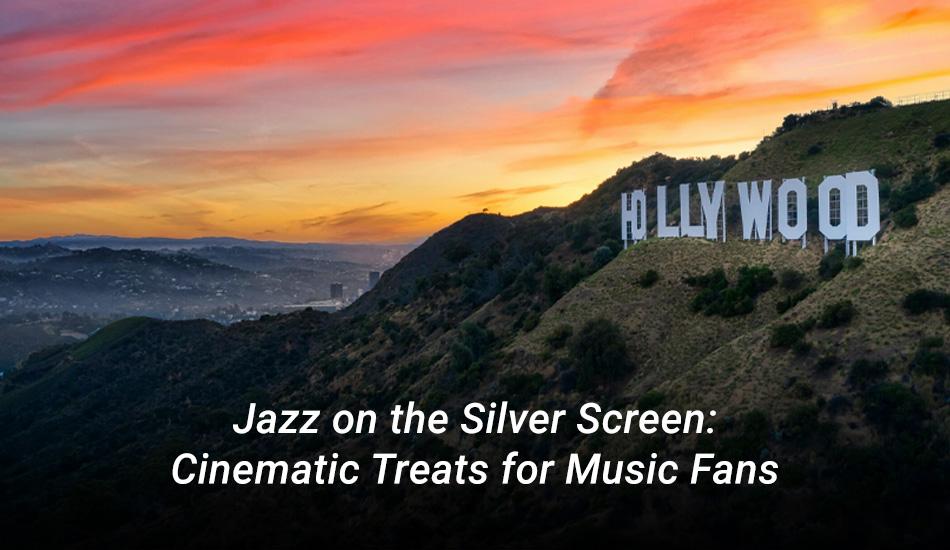
Jazz on the Silver Screen: Cinematic Treats for Music Fans
Jazz music and cinema have had an intriguing relationship over the years. Many great films prominently feature jazz soundtracks and characters. This article explores 10 key examples of jazz in cinema and analyzes how they demonstrate the unique connection between these two creative mediums.
Jazz rose to popularity in the early 20th century and quickly permeated American culture. It makes sense then that when sound films emerged, jazz made its way to the silver screen. Jazz music has been featured in movies ranging from biopics of famous musicians to abstract animated tales. The rhythm and feel of jazz prove complementary to dynamic visual storytelling.
Looking at examples of jazz in film provides insight into how the genre has evolved and its lasting cultural impact. The following sections highlight 10 movies that encapsulate jazz on celluloid over many decades. They share exceptional musical moments and demonstrate why film and jazz make such natural creative bedfellows. Filmmakers have used jazz to bring stories to life and introduce new generations to the best jazz songs from icons like Miles Davis, Duke Ellington, and more jazz music that has stood the test of time.
10 Cinematic Jazz Examples
1. Jazz on a Summer’s Day
This legendary documentary from 1958 vividly captures performances from the Newport Jazz Festival, including all-time greats like Louis Armstrong playing with his All Stars band, Thelonious Monk’s genius on full display, and Anita O’Day showcasing her vocal dexterity. The film editing and camerawork are as sublime as the music, making it a joy to watch decades later.
2. Bird
Forest Whitaker earned best actor honors at Cannes for his intense, mesmerizing performance as the alto sax icon Charlie Parker in this 1988 biopic. Under Clint Eastwood’s assured direction, the film reveals Parker’s genius as well as his struggles with addiction and relationships. Archival footage and an atmospheric jazz soundtrack round out the experience.
3. The Cotton Club
Francis Ford Coppola directs an A-list cast in this 1984 drama focused on Harlem’s famed Cotton Club during the Prohibition era. Along with a riveting plot centered on a musician mixed up with mobsters, the film features top-notch production design and performances by the Duke Ellington Orchestra, Cab Calloway, and others.
4. Soul
Pixar put an animated spin on jazz with this recent fantasy about middle-school music teacher Joe Gardner, voiced by Jamie Foxx. After an accident, Joe’s soul gets separated from his body. The film then explores abstract spiritual realms, all fueled by a score combining lively jazz composed by Jon Batiste, Trent Reznor, and Atticus Ross.
5. Cabin in the Sky
In this 1943 all-black cast musical, Ethel Waters portrays a devout woman trying to save her husband, Little Joe (Eddie Anderson), from damnation. The stellar supporting cast, delivering sensational singing and dancing, also includes Lena Horne and Louis Armstrong. With the legendary Duke Ellington serving as musical director, it’s no wonder this early film is brimming with jubilant jazz performances.
6. Thelonious Monk: Straight No Chaser
This intimate 1988 documentary by famed filmmaker Charlotte Zwerin provides rare insight into the quiet genius of jazz pianist and composer Thelonious Monk, featuring illuminating interviews with friends and family and plenty of engrossing, unconventionally beautiful music. It earned critical acclaim for upending traditional notions of documentary film structure – much like Monk did with musical conventions.
7. Miles Davis: Birth of the Cool
This 2019 documentary from director Stanley Nelson explores Miles Davis’ early career and how he pioneered the subgenre “cool jazz” by experimenting with mixing bebop and classical music influences. Archival photos, interview footage, and audio snippets come together to reveal insights into Miles’ artistic vision and uncompromising nature. Even viewers familiar with Miles Davis will discover revelatory moments.
8. Passing Through
This under-the-radar film stars Nathaniel Taylor as a gifted jazz trumpeter struggling to regain his footing after being recently released from prison. Writer-director Larry Clark eschews predictability at every turn in this moody, evocative indie with genuine musical performances. Seek it out if you can for an illuminating glimpse into the contemporary jazz scene.
9. La La Land
While not strictly speaking a jazz film, the Oscar-winning 2016 musical starring Ryan Gosling and Emma Stone centers on two aspiring entertainers trying to make it in Los Angeles while navigating a romantic relationship. With sweeping Cinemascope visuals and a score combining jazzy themes and show tunes, its modern take on the classic movie musical pays loving homage to dreamers everywhere.
10. Mo’ Better Blues
Director Spike Lee forays into music biopic territory by fashioning this 1990 drama as a semi-fictionalized portrait of gifted but troubled jazz trumpeter Bleek Gilliam, played brilliantly by Denzel Washington. Come for the drama; stay for the evocative trumpet jazz played by Washington and the featured bands in the film.
Conclusion
These 10 films demonstrate the profound storytelling capacity of jazz and cinema, expertly weaving together visuals and sound. From concert films to biopics to abstract animation, movies have long embraced the rhythm and soul of jazz. This symbiotic relationship will likely continue to inspire filmmakers and movie-goers for decades to come.
So if you want a taste of sublime trumpet solos, piano playfulness, saxophone moodiness, and more, be sure to explore the realm of jazz on the big screen. You’re bound to discover some favorite new jazz music songs and films.
